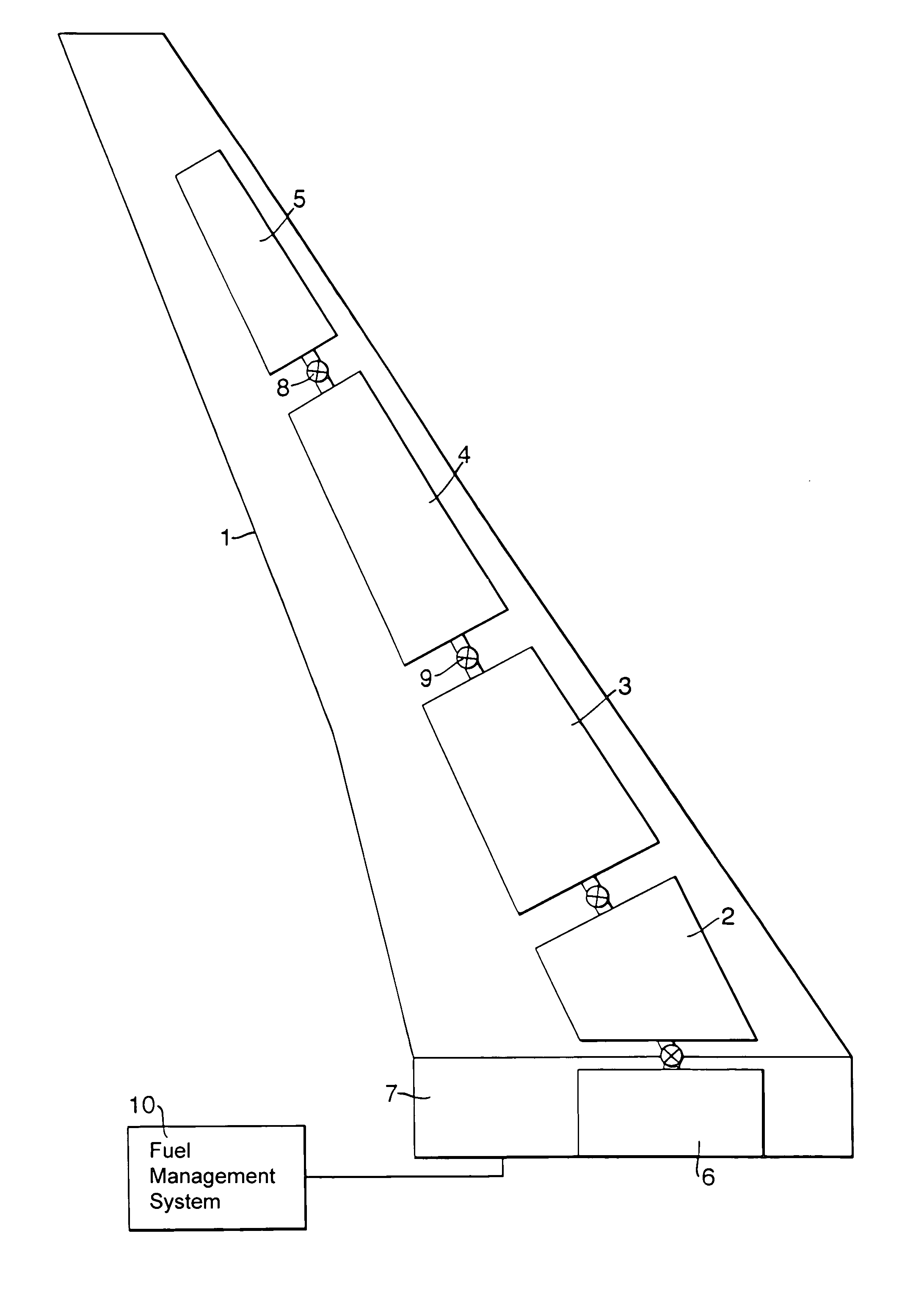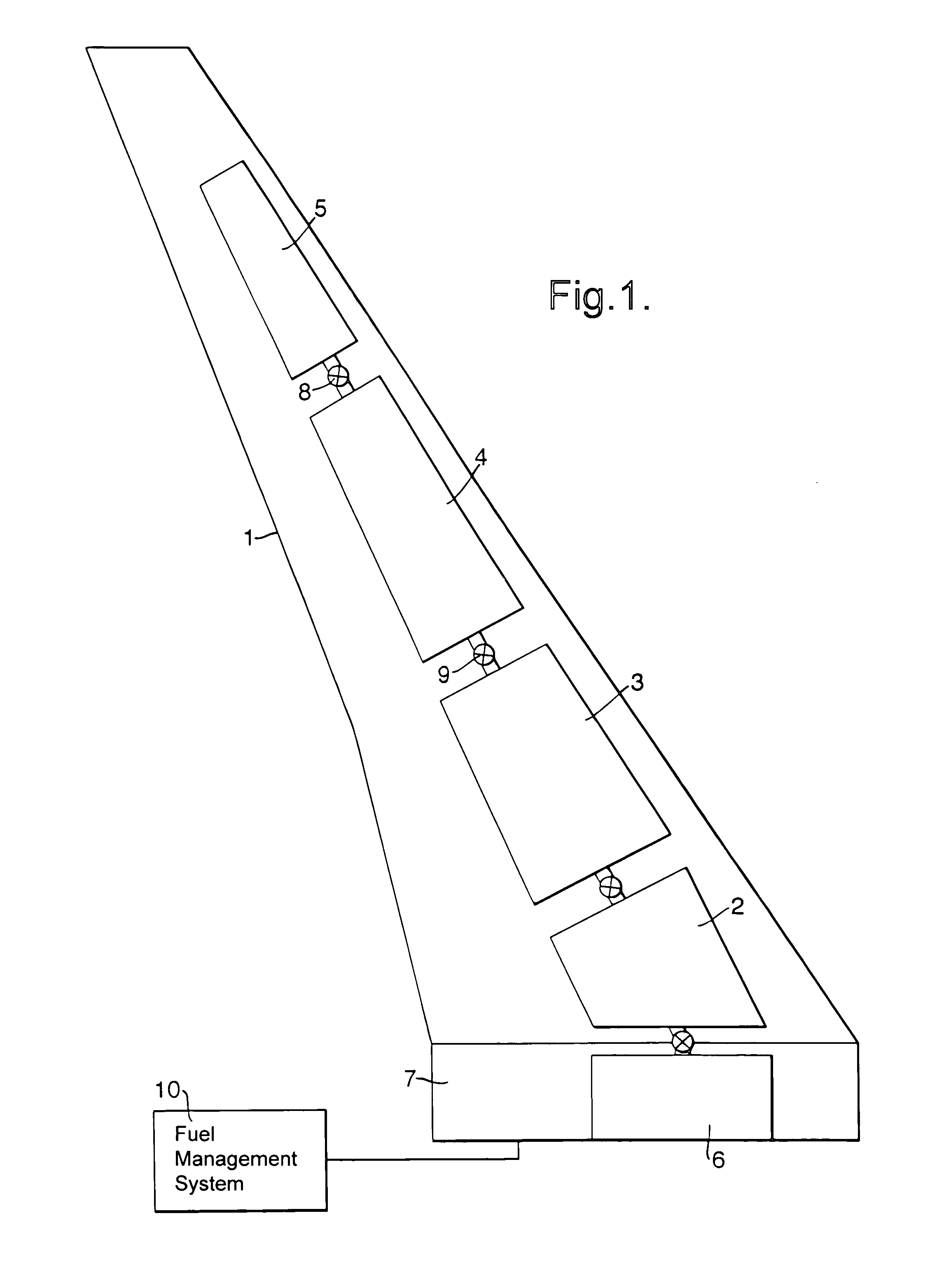Aircraft structure fatigue alleviation
a technology for aircraft and structure, applied in aircraft components, aircraft control, fuel tanks of power plants, etc., can solve the problems of micro cracks, aircraft may be scrapped or require major repair, and aircraft may be scrapped or scrapped, so as to achieve the effect of improving fatigue alleviation
- Summary
- Abstract
- Description
- Claims
- Application Information
AI Technical Summary
Benefits of technology
Problems solved by technology
Method used
Image
Examples
Embodiment Construction
[0035]The drawing shows the distribution of tanks between the fuselage and one wing of an aircraft, the reader will appreciate that the principle can be extended to the second wing of the aircraft and that more or fewer tanks may be used, taking account of the size and fuel requirements of the aircraft in question. The wing (1) comprises 4 fuel tanks, an inner engine feed tank (2), an inner transfer tank (3), an outer engine feed tank (4) and an outer transfer tank (5). A further fuel tank, the centre tank (6) is located in the fuselage (7). Each of the tanks is connected to a fuel line (8) in which, between it and each tank, is located a two way valve (9). The fuel management system (10) coordinates the following fuel transfer operation during the GAG cycle.
[0036]Prior to taxi and in the run up to take off, each of the engine feed tanks (2, 4) retains a minimum safe level of fuel sufficient to operate the engines (not shown). Depending on the volume of fuel carried, the remaining f...
PUM
 Login to View More
Login to View More Abstract
Description
Claims
Application Information
 Login to View More
Login to View More - R&D
- Intellectual Property
- Life Sciences
- Materials
- Tech Scout
- Unparalleled Data Quality
- Higher Quality Content
- 60% Fewer Hallucinations
Browse by: Latest US Patents, China's latest patents, Technical Efficacy Thesaurus, Application Domain, Technology Topic, Popular Technical Reports.
© 2025 PatSnap. All rights reserved.Legal|Privacy policy|Modern Slavery Act Transparency Statement|Sitemap|About US| Contact US: help@patsnap.com


